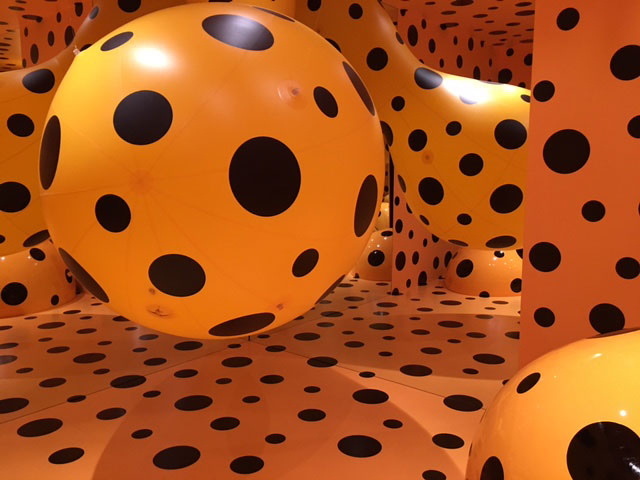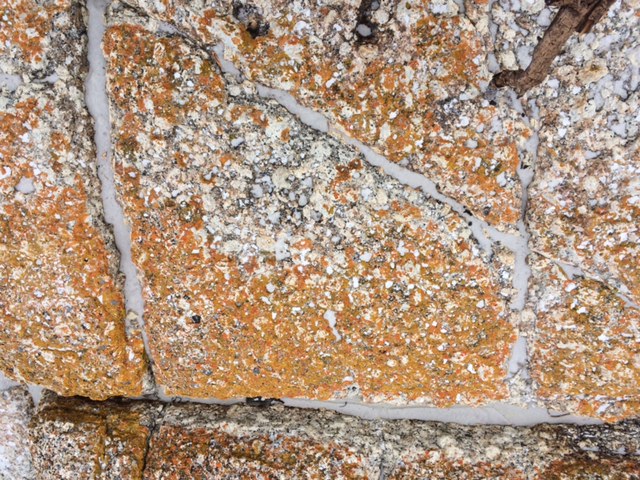-
With all the excitement accompanying Hobart’s unveiling of MONA back in 2012, not even the most optimistic among us could’ve foreseen how transformational a privately owned modern art museum would be for the tourism fortunes of the capital or for Tasmania as a whole.
Indeed, it’s not overstating things to say MONA helped redefine Tasmania’s place in Australia’s highly competitive tourism mix.
"We can’t rest on our laurels if we’re to keep building Tasmania’s visitor economy."
Chris Sparks, Regional Executive, Regional Business Banking Tasmania at ANZYet, for everything it’s brought to Hobart, we can’t rest on our laurels if we’re to keep building Tasmania’s visitor economy, driven by investment in and a growing reputation for the highest-quality tourist attractions and experiences.
Central to this push will be the continued diversification of our tourism offerings, such as world-class projects like the proposed Mount Wellington Cable Company and a joint proposal from the Cradle Coast Authority, the Tourism Industry Council Tasmania (TICT) and the Parks and Wildlife Service for a similar attraction across Cradle Mountain.
We are on the right track. According to the Tasmanian Visitor Survey Year Ending December 2016 update, in the 2016 calendar year Tasmania attracted 1.24 million visitors, 7 per cent more than the previous year.
For the first time visitor spending reached $A2.14 billion, up 10 per cent (was $A1.75 billion year ending 2014) with total nights spent by visitors in the state up 6 per cent to 10.66 million, up 6 per cent.
This level of growth is exciting for us all and when we consider the host of new, premium-end hotels, accommodation and attractions coming online in coming years, the path to reaching the Tasmanian government’s T21 Strategy’s goal of 1.5 million visitors come 2020 becomes clear.
Tasmania too needs to better market its offerings – it’s not just MONA. Or Cradle Mountain. Or Port Arthur. It’s diverse. And it has, in Launceston, a vibrant second city. Take the JAC Group proposal for the Cataract Gorge Skylift, linking Launceston and the Cataract Gorge Basin, and the state’s ability to attract new visitors for longer stays and greater spending becomes stronger.
{CF_IMAGE}
Detail from room installation Dots Obsession—Tasmania 2016 by Yayoi Kusama, commisioned for Origin of Art Exhibition, MONA Hobart
One need only look at similar initiatives in far North Queensland, where the Cairns and Port Douglas region’s Sky Rail Rainforest Cableway has been lauded over the past two decades for the experience it has brought to tourists in that part of the world. The eco-friendly credentials of such an attraction opened a new tourism market for FNQ, boosting visitor numbers to the region by offering a world-class experience.
The eco-friendly credentials of such an attraction opened a new tourism market for FNQ, boosting visitor numbers to the region by offering a world-class experience.
Add to the mix the mooted redevelopment of Macquarie Wharf, calls for another world-class art gallery, and a push for the country’s major football codes to create Tasmanian-based A-League and AFL franchises and the there’s no reason why the state can’t look to secure its place as a Top-10 tourist destination globally.
{CF_IMAGE}
STATE SIGNIFICANCE
With news the cable cars on Mount Wellington was to be a $A54 million development came discussion as to whether it should be a project of state significance.
Land was set aside on the mountain to remove a major roadblock faced by the project. The government advised the project should go through the usual planning processes rather than the one gazetted for projects of state significance.
At this stage this project remains on track to be funded by investors with those involved confident the investment drive will be very successful once the project has planning approval.
That said timing is now crucial as Tasmania is due for its next state election by March 2018. Government support would be a significant step in the viability of the project.
On assumption the project is supported by the government, from a planning approval perspective is there a precedent being set, including land acquisition where necessary for themed investment across Northern Tasmania.
What will become clear shortly as all sides of government get into election mode is their future intentions for tourism across Tasmania.
Could this mean ‘election’ support for such attractions at Cradle Mountain and the Launceston Cataract Gorge, knowing the government remains ahead of the 5 per cent growth rate required annually to reach the state’s tourism target of 1.5m visitors by 2020?
One must hope any perceived political unrest as Tasmania heads to the polls inside this next 12 months does not disrupt what’s being touted for Tasmania’s tourism sector by 2020.
FLOW-ON EFFECTS
Of course, the challenge will be execution and no one pretends all these projects will automatically succeed but the flow-on of such a diverse portfolio of attractions will mean more flights in and out of our airports to support the predicted influx of visitors.
Launceston Airport is eyeing the opportunity, much in the same way as Hobart with the southern city’s runway expansion set to see freight leave for China (VAN fresh milk for one) from March this year.
The expanded capacity is expected to lead to regular direct flights in and out of Asia and New Zealand as well as new domestic markets.
{CF_IMAGE}
There are complications of course. With the cable cars on Mt Wellington to be a $54 million development there was discussion in late 2016 as to whether this should be a project of state significance.
This was recently set aside following a decision to instead acquire land on the mountain, removing a major roadblock faced by the project however the government has advised the project should go through the usual planning processes, rather than the project of state significance process.
At this stage this project remains on track to funded by investors with those involved confident the investment drive will be very successful once the project has planning approval. That said timing is now crucial as Tasmania is due for its next State election by March 2018. Government support would be a significant step in the viability of the project.
What will become clear shortly as all sides of government get into election campaign mode is their future intentions for tourism across Tasmania. This could mean ‘election’ support for such attractions at Cradle Mountain and the Launceston Cataract Gorge. Today the state remains ahead of the 5 per cent growth rate required annually to reach the tourism target of 1.5 million visitors by 2020.
We should be optimistic about the tourism opportunity but there will obviously be policy proposals or changes as the election process unfolds.
OUTSIDE TOURISM
Agriculture and education have long-been the lifeblood of the Tasmanian economy and we need to ensure we continue to invest in their ongoing growth.
However, if the state’s long-term prosperity is to be secured, it’s equally important industry and government support the next big opportunity – one centred on building Tasmania’s credentials in the increasingly-lucrative tourism space.
The economic and social benefits are compelling and we’ve barely scratched the surface.
BANKING ON TOURISM
Many regional businesses are on the front foot in a bid to capitalise on the Tasmanian tourism boom. Below are just a few examples.
- Thousand Lakes Lodge
Opened earlier this year, the redeveloped Thousand Lakes Wilderness lodge is located in the Central Highlands World Heritage Area of Tasmania.
Formerly known as Bernacchi Lodge, the site – a former Antarctic training facility - went under a $A1.3 million redevelopment recently to ensure it remains in pristine condition.
The redevelopment was backed by an investor group led by former V8 Supercar and Nascar driver - and now Tasmanian resident - Marcos Ambrose.
- Blue Derby Pods Ride
Globally acclaimed, the Derby mountain bike facilities consist of 100 kilometres of trails in the Blue Derby area of North East Tasmania, covering Hollybank, Derby, Blue Tier and Weldborough.
Blue Derby Pods is business in the region which won a tender form the Tasmanian government in 2016 as part of a state-sponsored tourism push.
Alongside guide services on the trail, the group offers uniquely designed, sleeping pods suspended over the ground in the Tasmanian bushland. It’s a good example of unique and innovative services offered to take advantage of the growing tourism market.
- Maria Island Ferry
The Maria Island Ferry is the only fully enclosed passenger vessel offering services to Maria Island off the south-east coast of Tasmania. The ferry provides three services a day each way during peak periods as well as regular off-peak offerings.
In 2017, the Navigators Group won the right to commence a new service to the island from March.
These companies are just a small slice of an amazing volume of activity occurring right across the state.
Chris Sparks is Regional Executive, Regional Business Banking Tasmania at ANZ
All photos by Andrew Cornell, BlueNotes Managing Editor.
The views and opinions expressed in this communication are those of the author and may not necessarily state or reflect those of ANZ.
- Thousand Lakes Lodge
-
-
-
anzcomau:Bluenotes/technology-innovation,anzcomau:Bluenotes/technology-innovation/economics,anzcomau:Bluenotes/technology-innovation/diversity,anzcomau:Bluenotes/technology-innovation/innovation
A tour of Tasmania’s future
2017-03-23
/content/dam/anzcomau/bluenotes/images/articles/2017/March/tassie-banner.PNG



